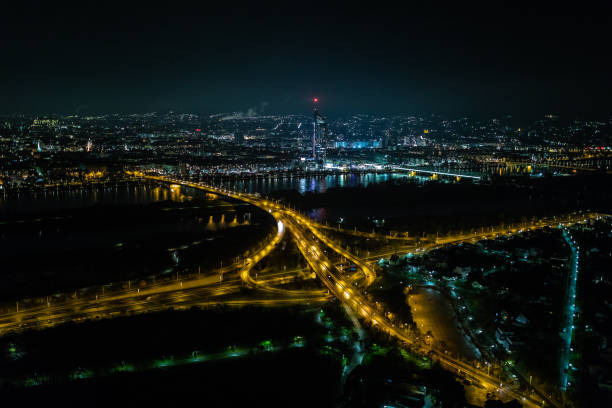Last month, news spread about possible blackouts in Europe. This set off alarm bells all across Europe and left people wondering whether their future holds no light, no warm water and no heating. This raises the question if and how the EU and its member states are managing the upcoming energy transition
The news of a plausible power outage is spreading across Europe after Austrian Defence Minister Tanner said it’s only a matter of time before a blackout will occur. Therefore Austria launched a massive poster campaign to warn its people and initiated emergency simulations. The word propagated through tens of smaller online news channels creating quite an uproar in some European countries: in Spain, gas bottles and camping equipment got sold-out in November, requiring Ecological Transition Minister Ribera to intervene and calm citizens’ nerves. Although the motives of these scaremongers might be sincere, a perspective of an energetically independent Europe using existing green alternatives could be a more optimistic approach rather than unleashing fear and anxiety.
Managing the transition pace
However, the fears for future energy shortages are not completely caught out of thin air. During the upcoming energy transition, two main obstacles will undermine the European Green Deal goals. The most pertinent one will be managing the transition pace towards the 55% greenhouse reduction target by 2030 and climate neutrality by 2050. Phasing out (or down) fossil fuels inevitably involves a decrease in natural gas imports from third countries. Nonetheless, maintaining healthy relationships, especially with Russia which comprises 9% of the total European energy mix, is needed to secure a steady energy supply for the time being. The second challenge is inherent to most renewable energy sources. Even when clean energy production meets the integral energy demand, shortages will occur during consumption peak and trough production moments. Therefore, investing in the expansion of the EU energy grid and storage capacity from excess energy production in the form of hydrogen and pumped-storage hydroelectricity will prove to be crucial and have been included in the EU Taxonomy for sustainable activities. Moreover, the outdated European targets on energy grid interconnectivity set in 2014 should be revised on a national level.
To achieve this, member states have to follow Sweden’s lead. The role-model country in the war against climate change currently uses 54% renewable energy (mainly hydropower and biomass) for its power supply and manages heating by using excess warmth of local district power plants. Tools in its success include high carbon taxes and the introduction of sustainable housing by utilizing biogas from food waste in old gasworks. Furthermore, it is investing in innovations, such as the smart grid project with E.ON in Hyllie, where overflowing local energy is stored by adapting to the weather. This storage idea may help overcome future blackouts.
While Sweden has been coal-free since 2020, Croatia hasn’t even adopted a distinct coal-mitigation plan yet and stays fossil fuel-focused. However, the former benefits from its geographical advantages and maintains more hydrogen capacity than other members like Germany. Germany, co-responsible for 54% of current EU coal emissions along with Poland, is dependent on the interconnected European grid and hydropower plants abroad. Nevertheless the German government ensures that observation of supplies, storage facilities and the focus on biogas guarantee an electricity supply that prevents blackouts even in dependent countries. This facilitates an ambitious German phase-out by 2038 and will result in a quarter cut of CO₂ by 2030, aligning with EU policy.
An interconnected Europe
In conclusion, the Austrian Minister’s concern on future blackouts cannot be diminished as fake news. Changing weather patterns which impact the productivity of renewables and the closing of European nuclear and coal plants confirm a fragile system that could indeed lead to power outages. EU policies, urging for quick transition, should consider red flags that are arising from other parts of the world, such as the large-scale blackout in China this September due to an excessive energy transition pace.
The European key to overcome future challenges and meet the targets set in the Paris Agreement is to obtain a sufficient green energy supply for the whole EU before all fossil and nuclear sources are cut off. In this way an interconnected Europe could face energy shortages as one union. The Swedish heat-grid project could serve as a valid example for an effective and secure transition process which could be upscaled to a European level. This implies investments to increase resilience and cooperation to obtain the much-needed shared objective to become carbon neutral.
However, the fears for future energy shortages are not completely caught out of thin air. During the upcoming energy transition, two main obstacles will undermine the European Green Deal goals. The most pertinent one will be managing the transition pace towards the 55% greenhouse reduction target by 2030 and climate neutrality by 2050. Phasing out (or down) fossil fuels inevitably involves a decrease in natural gas imports from third countries. Nonetheless, maintaining healthy relationships, especially with Russia which comprises 9% of the total European energy mix, is needed to secure a steady energy supply for the time being. The second challenge is inherent to most renewable energy sources. Even when clean energy production meets the integral energy demand, shortages will occur during consumption peak and trough production moments. Therefore, investing in the expansion of the EU energy grid and storage capacity from excess energy production in the form of hydrogen and pumped-storage hydroelectricity will prove to be crucial and have been included in the EU Taxonomy for sustainable activities. Moreover, the outdated European targets on energy grid interconnectivity set in 2014 should be revised on a national level.




